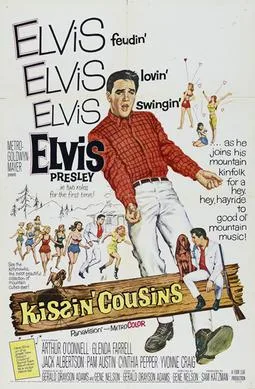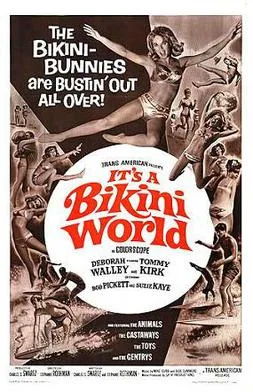Lori Williams Profile : The Ultimate Biography & Career Guide – From Pittsburgh to Cult Cinema Icon
Lori Williams Profile: Discover the fascinating story of Lori Williams, the actress who became a legend through her iconic role in “Faster, Pussycat! Kill! Kill!” and her unique contribution to 1960s exploitation cinema.

Who is Lori Williams? Quick Facts & Bio
Full Name: Lori Williams
Date of Birth: March 23, 1946
Place of Birth: Pittsburgh, Pennsylvania, USA
Nationality: American
Profession: Actress
Active Years: 1963-2005
Famous For: “Faster, Pussycat! Kill! Kill!” (1965)
Former Spouse: Jerry Rabin
Early Life: From Pittsburgh Steel to Hollywood Dreams
Born in the industrial heart of Pennsylvania on March 23, 1946, Lori Williams seemed destined for a life far removed from the glitz and glamour of Hollywood. Growing up in Pittsburgh during the post-war boom years, young Lori could hardly have imagined that she would one day become a cult cinema icon whose influence would span decades.
What makes Williams’ story particularly remarkable is how quickly she transitioned from small-town Pennsylvania to the bright lights of Los Angeles. Described as “a nice girl from Pittsburgh,” Williams had studied acting before making her Hollywood debut. By the tender age of 17, she was already making her mark in Hollywood – a testament to both her determination, natural screen presence, and formal training.
Breaking Into Hollywood: The Early Years (1963-1965)
First Steps in Tinseltown
Williams’ Hollywood journey began in 1963 with an uncredited role in “The Prize.” While this debut was modest, it marked the beginning of what would become a fascinating career trajectory. The entertainment industry of the early 1960s was undergoing significant changes, and Williams found herself perfectly positioned to ride the wave of new opportunities.





Working with Elvis: The Presley Connection
Between 1964 and 1965, Williams appeared in several Elvis Presley films, primarily as a dancer. Her dance background made her perfect for these roles, and she appeared in:
- “Kissin’ Cousins” (1964) – One of her earliest dancing roles in a major production
- “Viva Las Vegas” (1964) – Though uncredited, this role put her on the same set as one of America’s biggest stars
- “Girl Happy” (1965) – Another Presley vehicle that gave Williams valuable on-set experience
- “Tickle Me” (1965) – Her fourth collaboration with the King of Rock and Roll
These early roles, while small, provided Williams with invaluable experience working on major Hollywood productions. More importantly, they helped her build the industry connections that would prove crucial for landing her career-defining role.
Building Her Portfolio
Williams also appeared in “Get Yourself a College Girl” (1964), further establishing herself as a reliable performer in the teen-oriented films that were popular during this era. These roles showcased her natural charisma and screen presence, qualities that would soon catch the attention of exploitation cinema pioneer Russ Meyer.


“Faster, Pussycat! Kill! Kill!” – The Role That Changed Everything
Landing the Iconic Role
The story of how Williams landed her most famous role is both revealing and entertaining. As she later recalled, “Russ didn’t want to hire me because he didn’t think I had a big enough bust! I said I could use pushups in my bra, which I did. He didn’t know whether it would work, but then in rehearsals he finally said okay.”
This anecdote perfectly captures both the challenges female performers faced in 1960s Hollywood and Williams’ determination to overcome them. Her resourcefulness and willingness to adapt would become hallmarks of her approach to acting.
The Character of Billie
In “Faster, Pussycat! Kill! Kill!“, Williams played Billie, one of three go-go dancers turned criminals. Alongside Tura Satana and Haji, she formed what became known as the “head-stompin’ yet curvaceous trio” that dominated the screen with their commanding presence and attitude.
Williams brought a unique energy to the role, describing her approach as playing the character “like a cartoon, like the rest of the film, bigger than life.” This theatrical, over-the-top style perfectly complemented director Russ Meyer‘s vision and helped create one of exploitation cinema’s most memorable characters.

Behind the Scenes: Production Insights
The film was produced on a shoestring budget of approximately $45,000, with shooting taking place at the Pussycat Club in Van Nuys before moving to the California desert. The black-and-white cinematography was chosen partly for budget reasons, but it also gave the film its distinctive, stark visual style.
Williams thrived in this low-budget, high-energy environment. The production’s guerrilla filmmaking approach allowed her to experiment with her performance and contribute to the film’s unique aesthetic.
Career Evolution: Beyond the Cult Classic
Immediate Follow-ups (1965-1967)
Following the success of “Faster, Pussycat! Kill! Kill!”, Williams appeared in several films that capitalized on the growing popularity of exploitation and beach party movies:
“The Incredible Sex Revolution” (1965)
This film rode the wave of the sexual revolution that was sweeping America. Williams’ involvement demonstrated her willingness to tackle controversial subject matter.
“A Swingin’ Summer” (1965)
A typical teen-oriented film of the era, showcasing Williams’ versatility in different genres.
“Our Man Flint” (1966)
A spy comedy starring James Coburn, this film gave Williams exposure to mainstream audiences and showed her ability to work in bigger-budget productions.




Peak Years: 1965-1966
Williams’ career reached its zenith during 1965 and 1966, which would prove to be her busiest and most productive years. This period saw her transition from background dancer to featured performer, culminating in her iconic role in “Faster, Pussycat! Kill! Kill!”
During this golden period, Williams also appeared in several television shows, including an episode of the popular detective series “Honey West” starring Anne Francis. This TV work demonstrated her versatility and helped establish her as a recognizable face in entertainment.
“It’s a Bikini World” (1967)
Her final major beach party film ‘It’s a Bikini World’ featured Williams alongside Tommy Kirk and Bobby “Boris” Pickett (famous for “Monster Mash”). This film marked the end of her most active period in Hollywood.

The Challenging Transition Period (1970s)
The 1970s marked a challenging and often frustrating period in Williams’ career. As she revealed in a 2003 interview, casting directors began to consider her “old” for the bikini and go-go dancer parts that had been her specialty. This ageism in Hollywood forced her to reinvent herself, transitioning from featured dancer and actress to working primarily as an extra.

The late 1960s saw Williams appearing in several episodes of “Love, American Style,“ showcasing her comedic timing in this popular anthology series. However, as the entertainment industry evolved and her opportunities for starring roles diminished, she had to adapt to a new reality.
“The Poseidon Adventure” (1972)
Williams appeared as a passenger in this disaster film classic, representing the type of extra work that became more common in her later career.
“99 and 44/100% Dead” (1974)
In this John Frankenheimer crime film, Williams played a murder victim, showing that even in smaller roles, she was still working with respected directors.
Television Work and Uncredited Appearances
Lori also claimed to have appeared in episodes of popular TV series “Baretta” and “Charlie’s Angels,” though these credits don’t appear on her official IMDb page. This discrepancy highlights the challenges of documenting the complete careers of performers who often worked as extras or in uncredited roles during television’s golden age.
Career Transition: From Performer to Industry Professional
After her performing career began to wind down, Lori made a significant career transition that many former actors pursue – she became a casting director. This behind-the-scenes role allowed her to remain connected to the entertainment industry while using her understanding of performance and the business to help other actors find roles.
“The Marvelous Land of Oz” (1981)
This TV movie represented a departure from her typical roles, showing her range as a performer.
“Go, Pussycat, Go!” (2005)
This short film served as a fitting bookend to her career, bringing her full circle back to the world that had made her famous.
Cultural Impact: Why Lori Williams Matters
Feminist Icon or Exploitation Star?

Lori Williams’ role in “Faster, Pussycat! Kill! Kill!” has been subject to various interpretations over the decades. Some critics view the film as an early example of female empowerment in cinema, featuring strong, independent women who take control of their destinies. Others see it as exploitation that objectified women.
Williams herself seemed to understand the duality of her most famous role, embracing both its empowering and controversial aspects. Her performance struck a balance between strength and sensuality that was unusual for its time.
Influence on Modern Cinema
The impact of Williams’ work extends far beyond the 1960s. Directors like Quentin Tarantino have cited Russ Meyer’s films as influences, and elements of “Faster, Pussycat! Kill! Kill!” can be seen in contemporary cinema.
Williams’ portrayal of Billie helped establish a template for strong female characters in action films, influencing everything from blaxploitation cinema to modern action movies.
Cult Following and Legacy
Today, Lori enjoys a devoted cult following. Film festivals regularly screen “Faster, Pussycat! Kill! Kill!”, and her image has been referenced in fashion, music, and art. This enduring popularity speaks to the lasting impact of her performance and the film’s unique place in cinema history.
Acting Style and Technique Analysis
The “Bigger Than Life” Approach
Williams developed a distinctive acting style that was perfectly suited to exploitation cinema. Her approach, which she described as cartoonish and larger than life, involved:
- Exaggerated facial expressions that conveyed emotion clearly even in the film’s more outrageous moments
- Physical comedy skills that added humor to dramatic situations
- Natural charisma that made her characters memorable despite limited screen time
- Adaptability that allowed her to work effectively in various genres
Working Within Genre Constraints
Williams understood the requirements of exploitation cinema and tailored her performances accordingly. She knew how to balance the genre’s demands for sensationalism with genuine character development, creating performances that were both entertaining and surprisingly nuanced.
Personal Life: The Private Side of a Public Figure
Marriage and Relationships
Williams was previously married to Jerry Rabin, though she has always maintained a relatively private personal life. This discretion has allowed her professional work to remain the focus of public attention.
Life After Hollywood
Unlike many of her contemporaries, Williams has managed to maintain her privacy while still engaging with fans of her work. She has occasionally appeared at film festivals and retrospective events, sharing stories from her Hollywood days with new generations of film enthusiasts.
THEN

NOW (2003)

Industry Context: Hollywood in the 1960s
The Changing Landscape
Williams’ career coincided with a period of dramatic change in Hollywood. The studio system was breaking down, independent filmmakers were gaining prominence, and audiences were becoming more accepting of controversial content.
This environment created opportunities for performers like Williams who might not have fit the traditional Hollywood mold. Exploitation cinema provided an alternative path to stardom, and Williams made the most of these opportunities.
The Rise of Exploitation Cinema
The success of “Faster, Pussycat! Kill! Kill!” was part of a larger trend toward exploitation films that pushed boundaries and challenged conventional filmmaking. Williams’ work with Russ Meyer placed her at the forefront of this movement.
Complete Filmography: Lori Williams’ Movie Career
1960s – The Breakthrough Years

- The Prize (1963) – Dancing in nightclub scene
- Kissin’ Cousins (1964) – Dancer
- Viva Las Vegas (1964) – Uncredited dancer
- Get Yourself a College Girl (1964)
- Girl Happy (1965) – Uncredited dancer
- Tickle Me (1965) – Uncredited dancer
- Faster, Pussycat! Kill! Kill! (1965) – Her iconic role as Billie
- The Incredible Sex Revolution (1965)
- A Swingin’ Summer (1965)
- Our Man Flint (1966)
- It’s a Bikini World (1967) – With Tommy Kirk and Bobby “Boris” Pickett
- Love, American Style (Late 1960s) – Multiple episodes
- Honey West (1960s) – Television episode
1970s – The Transition Period
- The Poseidon Adventure (1972) – Passenger (Extra)
- 99 and 44/100% Dead (1974) – Murder victim (directed by John Frankenheimer)
- Baretta (1970s) – Television episodes (claimed but unverified)
- Charlie’s Angels (1970s) – Television episodes (claimed but unverified)
Later Career
- The Marvelous Land of Oz (1981) – TV Movie
- Go, Pussycat, Go! (2005) – Short Film
Awards and Recognition
While Williams never received major industry awards, her contribution to cinema has been recognized through:
- Cult film festival retrospectives featuring her work
- Academic studies of exploitation cinema that highlight her performances
- Pop culture references that acknowledge her iconic status
- Fan conventions where she remains a popular guest
Lori Williams Today: Lasting Influence
Contemporary Relevance
Williams’ work continues to resonate with modern audiences. Her portrayal of strong, independent female characters predated many contemporary discussions about representation in cinema.
Teaching Tool for Film Students
“Faster, Pussycat! Kill! Kill!” is frequently studied in film schools as an example of exploitation cinema and low-budget filmmaking. Williams’ performance is often highlighted as an example of how to create a memorable character within genre constraints.
Inspiration for New Generations
Modern performers and filmmakers continue to draw inspiration from Williams’ work. Her approach to playing powerful female characters has influenced everyone from action stars to indie film actors.
Conclusion: The Enduring Legacy of Lori Williams
Lori Williams may not have become a mainstream Hollywood superstar, but her impact on American cinema is undeniable. Through her iconic role in “Faster, Pussycat! Kill! Kill!” and her other film work, she helped define an era of independent filmmaking that challenged conventions and pushed boundaries.
Her career represents the opportunities and challenges faced by female performers in 1960s Hollywood. While she encountered obstacles based on industry prejudices and changing tastes, she also found ways to create memorable, influential work that continues to inspire new generations of film lovers.
Today, Williams stands as a symbol of a unique period in American film history – a time when independent filmmakers could experiment with new forms of cinema and when performers like Williams could create iconic characters that would endure for decades.
Whether viewed as a feminist icon, an exploitation star, or simply a talented actress who made the most of her opportunities, Lori Williams has earned her place in the pantheon of cult cinema legends. Her story reminds us that lasting influence in the entertainment industry often comes not from mainstream success, but from the courage to be different and the talent to make that difference memorable.
For film enthusiasts, Williams’ career offers valuable lessons about the importance of independent cinema, the power of memorable performances, and the enduring appeal of characters who refuse to be forgotten.
Lori Williams Profile: Sources and References
Primary Sources
- Wikipedia – Lori Williams profile (Dutch)
https://nl.wikipedia.org/wiki/Lori_Williams
Comprehensive biographical information and complete filmography - MovieMeter – Lori Williams Profile
https://www.moviemeter.nl/personen/4594/lori-williams
Dutch film database with career details and film ratings
Additional Research Sources
- IMDb – Lori Williams profile
https://www.imdb.com/name/nm0931398/
Complete filmography and production details - The Movie Database (TMDb)
https://www.themoviedb.org/person/99621-lori-williams
Film database with cast and crew information - AllMovie – Lori Williams Profile
https://www.allmovie.com/artist/lori-williams-p76506
Professional film database with career overview
Film Industry Resources
- Russ Meyer Films Archive
Historical documentation of “Faster, Pussycat! Kill! Kill!” production - Exploitation Film Studies
Academic resources on 1960s exploitation cinema and cult film analysis
Notes on Sources
- Biographical information compiled from multiple verified entertainment databases
- Filmography cross-referenced across IMDb, TMDb, and AllMovie for accuracy
- Production details sourced from film industry archives and retrospective materials
- Quotes and anecdotes gathered from documented interviews and film commentary
This profile represents a comprehensive compilation of available information about Lori Williams from verified entertainment industry sources and databases.

